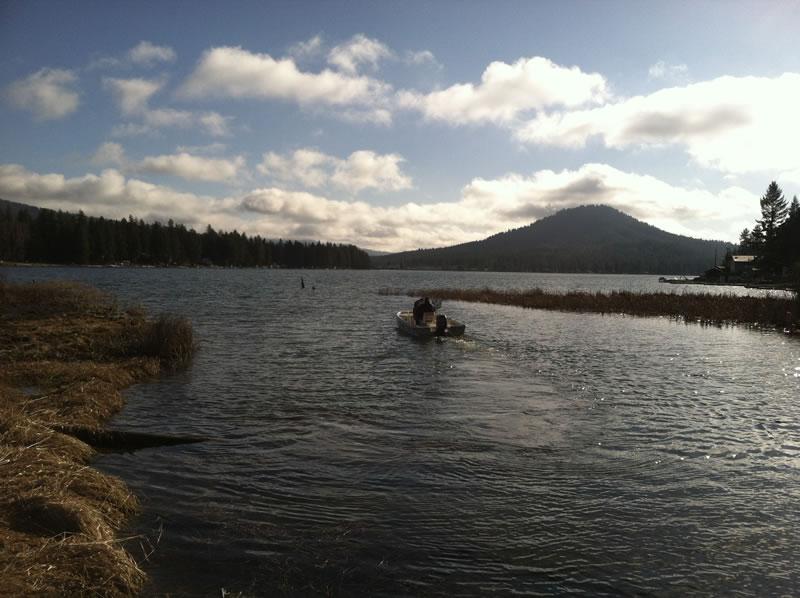2025 Trout Derby
4 prizes are waiting to be claimed!
Prizes already claimed here:- Assorted fishing merchandise
- $25 gift certificate
- Mack's Lure Pack
- NW Reel Life 1 Year Subscription
- ANNUAL SUBSCRIPTION FOR NORTHWEST SPORTSMAN MAGAZINE
- Month guest of honor pass
Catch a tagged fish? Fill out the
prize claim form.
Forget where to collect your prize? Recover your prize details.
Twenty-eight miles north of Spokane along the west side of U.S. Highway 395. This lake opens the 4th Saturday in April and runs through October 31st. The state record tiger trout (27 lbs., 7 oz.) was caught from Loon Lake in 2022. Loon is also known for its kokanee, which are now found in good numbers in the 11- to 13-inch range and have a generous catch limit. There are also Largemouth and Smallmouth bass, Brown Bullheads, Yellow Perch, Bluegill, and a few other warm water species.
A WDFW access (Loon Lake | Washington Department of Fish & Wildlife) and two resorts provide boating access and other services.
Two-pole fishing is allowed
Shoreline access: Good - Shoreline access is limited to area around boat launch. Private resorts offer some dock fishing.
WDFW water access areas on this lakeSpecies you might catch
- Bluegill
- Brown bullhead
- Green sunfish
- Kokanee
- Lake trout
- Largemouth bass
- Pumpkinseed Sunfish
- Rainbow trout
- Tiger trout
- Yellow perch
Lake information
County: Stevens
Acreage: 1118.50 ac.
Elevation: 2381 ft.
Center: 48.044799, -117.622246
Open in Google Maps
Catchable fish plants
| Stock Date | Species | Number Released | Number of Fish Per Pound | Facility |
|---|---|---|---|---|
Visit the Catchable Trout Plants page for a more detailed search of trout plants in this or other bodies of water. To view or download the source data for this table visit the WDFW Fish Plants dataset on the Washington State Open Data Portal
Fishing prospects calendar
Rainbow trout
Kokanee
Largemouth bass
Yellow perch
Bluegill
Pumpkinseed Sunfish
Brown bullhead
Photos
